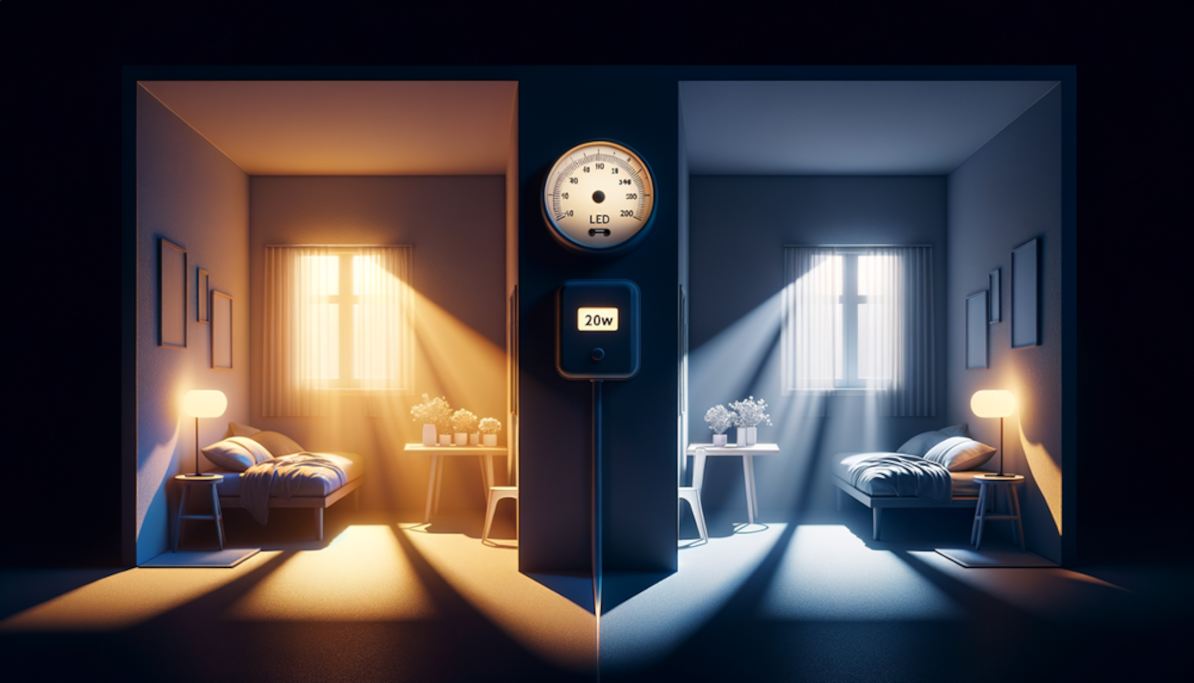You flip the dimmer switch and bask in the soft, cozy light, thinking, “Nice mood, lower bill!” But then a nagging thought crosses your mind:
Wait… am I really saving energy, or is this dimmed bulb just pretending to be frugal?
I used to wonder the same thing. After all, if you’re dimming a 10-watt bulb to half brightness, shouldn’t it just be using 5 watts? And if so, wouldn’t that make it nearly identical to using a 5-watt bulb from the start?
Turns out, the truth isn’t quite that simple.
Let’s dig into what’s really happening when you dim a light—and whether it’s as efficient as using a lower-rated bulb in the first place.
A lightbulb moment (literally): When I put dimming to the test
A couple of years ago, I started replacing all the old bulbs in my house with LEDs. I bought a bunch of high-efficiency dimmable LEDs, thinking I’d finally cracked the holy grail of lighting: bright when I need it, low-wattage when I don’t.
What shocked me? My energy bill barely budged.
Curious, I ran a small experiment using a power meter to measure actual electricity use. I compared:
- A 10W dimmable LED set to 50% brightness
- A 5W LED running at full brightness
Result? The 10W bulb at 50% used about 5.2 watts—almost exactly the same as the 5W bulb. But not identical.
That tiny gap led me down the research rabbit hole… and what I discovered blew my mind.
Not all dimming is created equal
The amount of energy saved when dimming depends on two big things:
- The kind of bulb you’re using
- The type of dimmer it’s paired with
Let’s break it down:
LED bulbs: Your energy-saving MVP
Modern LED bulbs are designed to use less power as you lower their brightness. Think of them like smart engines—you cut the gas, and they slow down without wasting fuel.
For example:
Dimming a 10W LED down to 50% generally cuts your energy use down to about 5W. That means yes—you’re saving nearly proportionally.
But here’s the twist: If you compare a dimmed high-wattage LED to a lower-rated one (say, dimmed 10W vs. unstressed 5W), the energy use will be close but not always equal. Slight differences in efficiency, circuitry, or even manufacturing quality can cause a small variation.
Incandescent bulbs: Still sipping power
Dimming old-school incandescent bulbs is a whole different game. Traditional rheostat dimmers basically “bleed off” the excess electricity as heat. So while the bulb glows dimmer, you’re still using more power than you’d expect.
If saving energy is the goal, incandescent bulbs aren’t your friend, no matter how low you dim them.
Electronic dimmers help a bit, but even then, incandescent bulbs simply aren’t as efficient as LEDs at any brightness level.
Dimmer compatibility matters more than you think
Using the wrong type of dimmer can kill your energy savings.
Modern trailing-edge dimmers are specifically built for LEDs. They regulate voltage more efficiently, reduce flicker, and lower heat waste, meaning more of your dimmer dollar actually goes into lighting, not heat.
If you’re still using an old dimmer with new LEDs, you might be missing out on the savings entirely.
The bottom line
Yes, dimmed bulbs use less electricity. And yes, a dimmed 10W bulb can come close to matching a 5W bulb’s energy use, especially if it’s an LED.
But here’s the hard truth:
For peak efficiency, using the lowest-wattage bulb that meets your lighting needs is still your best bet. Every extra watt counts over time, and a right-sized bulb keeps things simple.
So the next time you reach for the dimmer, remember:
You’re saving energy, sure—but not as much as if you’d picked the right-sized bulb to begin with.
Maybe that’s not as sexy as a high-tech dimmer panel with sliders and presets.
But it’s the kind of smart, quiet efficiency that adds up—one kilowatt at a time.




Can you be more specific about the content of your article? After reading it, I still have some doubts.